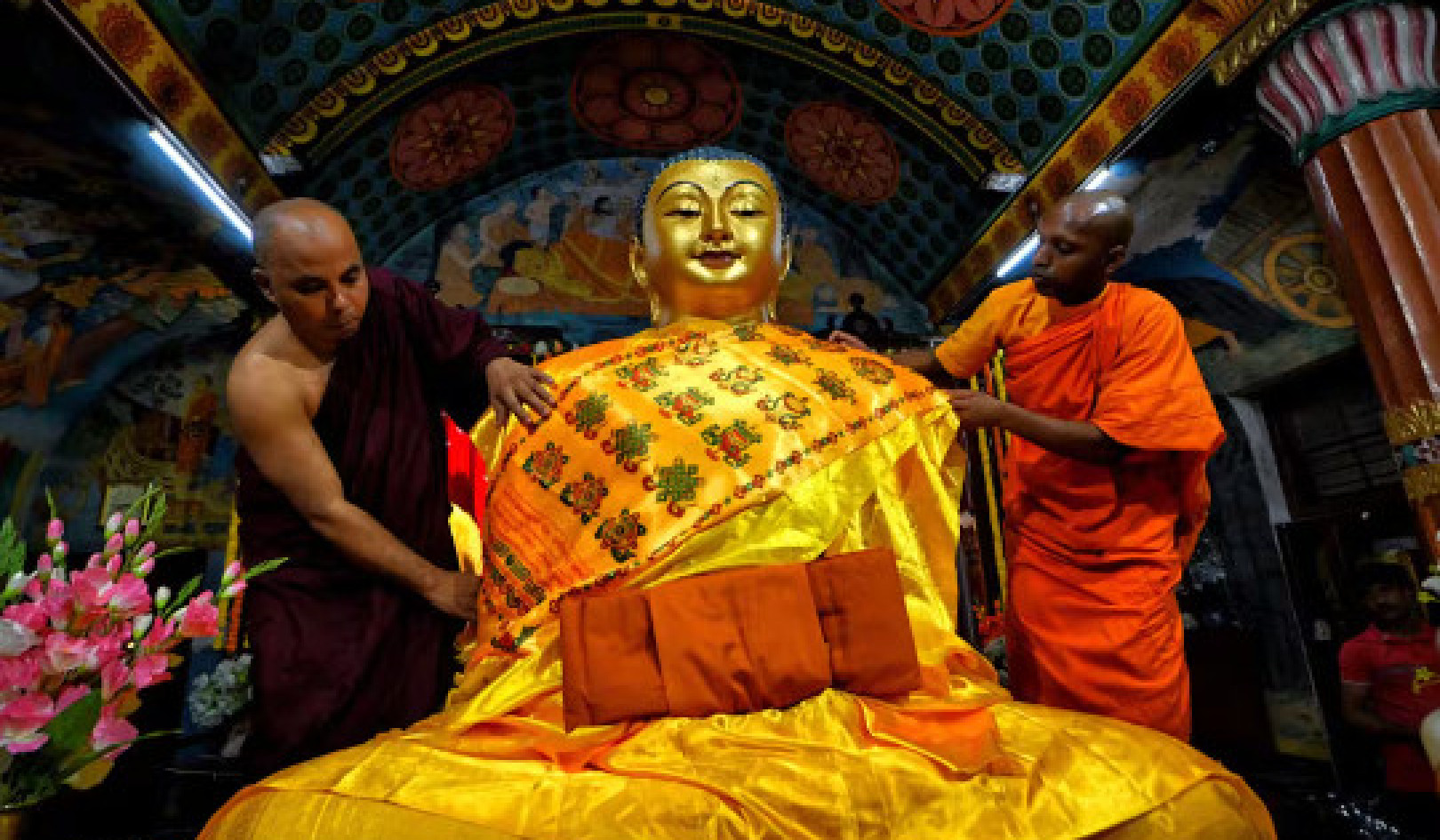
Many seekers are hoping for the “big moment,” when they are dramatically thrust into the depths of being like Eckhart Tolle was. However, this form of awakening is a rare experience. It’s more likely enlightenment will come gradually, as a result of cultivating presence
Thankfully, in order for us to benefit from breath and body awareness, a permanent shift in consciousness isn’t required. When we inhabit our body, even small improvements in present moment awareness can significantly reduce stress and suffering.
We begin by maintaining our awareness of surface physical sensations. Keeping our attention on bodily sensations and movements gradually enables us to go deeper and perceive a subtle energy that flows through all forms, including our body.
How's Your Breathing?
When was the last time you noticed your breathing? Since then, have you made a point of feeling cool air moving through your nostrils, throat, and upper lungs as you inhale? How about the warmer air in these three areas as you exhale? Take a moment now to feel the difference in temperature between your inhale and your exhale.
Along with noticing your breathing, have you also been practicing feeling your body? For instance, have you tried unclenching any body parts that are unnecessarily tense, such as your jaw, shoulders, or solar plexus? Take a moment to notice and feel the clothing and objects that are in contact with your body. These may include accessories, a chair, the floor, and anything in your hands.
When you are learning to live consciously, it’s best to return to the here and now frequently. For example, you can try noticing the sensation of breathing, and you can add the practice of feeling your body and unclenching your muscles. Don’t just go through the motions. Become very still, switching off, and go within to immerse yourself in the sensory world of your body.
After a few attempts at this, the mind may try to convince you this practice is better left for some other time and place. However, cultivating awareness can’t wait for the meditation cushion or the yoga mat, since the tendency is for it to become confined to these. Rather, a wise person cultivates awareness in each and every moment, since no other place or time is real.
Mundane Tasks & Everyday Activities
As useful as traditional awareness practices are to reduce stress and increase self-awareness, for most people these sessions are brief and periodic. If we are to dislodge the ego from its position of power, we must bring the light of our consciousness into the most mundane tasks and everyday activities. We must do this consistently all day, even if only for a few seconds at a time.
Since the ego considers most areas of our lives, such as family, friends, work, play, food, clothing, and shelter, as its exclusive domain, the more frequently we bring present moment awareness to these everyday relationships and activties, the more we will trust our inner being to run our life instead of relying on the ego.
To breathe consciously is to be alert enough to feel the physical sensation of breathing. To live consciously is to perform our daily activities and meet each situation with a quiet mind. We approach each task and situation with an “ease, grace, and lightness of being,” unconcerned with the “what ifs” of the past or future because something needs our attention right now. We are aware that what needs our attention the most is the present moment. We use our awareness of body and breath to keep our attention anchored here in the real, free of mental distraction and emotional reactivity.
Mantras and Visualizations Keep the Mind Engaged
While it’s true that there are practices that can provide a measure of short-term relief, knowing yourself as peace will likely continue to elude you because these practices typically keep the mind engaged. When emphasis is placed on an external practice, conscious living can rapidly devolve into a pseudo spiritual lifestyle.
It’s also the case that the egoic mind’s fear of dissolution encourages it to select teachings and practices that are less of a threat to its existence. After all, why merely feel your breath when you can think happy thoughts or say a mantra instead?
Practices that keep us lost in the abstract realm of thought and imagination can’t create the conditions for a permanent shift in consciousness. The power of any technique lies in our felt experience while performing it. For example, if we focus on the vibrations rippling through our body during our mantras, we give new life and potency to a practice the egoic mind has largely neutralized.
Our felt experience of the uninterpreted moment is always more important than the yoga or meditation posture we hold, the clothing we wear, the books we read, and the group or teacher we are a disciple of. Looking and superficially acting like a conscious person makes the ego feel good for a while, and is certainly less threatening than living as a conscious person.
Often the ego will grant you your “spiritual lifestyle,” as long as it emphasizes outer form over inner essence. In fact, the ego is more than happy with all of the spiritual clothing, incense, bells, bowls, CDs, DVDs, and retreats if these potentially useful tools are instead used solely to enhance one’s new identity. A spiritual lifestyle may be an improvement over the one we left behind, but it’s still a role the ego can happily inhabit since it keeps us at the surface of reality.
Be assured, the deep body awareness that quiets the mind is no more a threat to who we are than a dream. When we wake up from sleeping, the dream story that seemed so real quickly dissolves. When we wake up from the dream of “me,” attachment to our personal story disappears just as effortlessly.
Breathing Is One Of The Practices To Emphasize
From the day we are born until the moment of our passing, our body is in motion as a result of respiration. The majority of the time, we don’t actually control our breath. Like blinking, cell division, and blood circulation, breathing is mostly a natural bodily process that happens all by itself.
However, we do affect the quality of our breathing. Reacting to thoughts and emotions, the body produces breathing patterns that reflect the level of relaxation or distress we are experiencing.
Deeper and slower breathing tends to reflect a body and mind that are at ease. Excess physical tension and mental activity are typically accompanied by fast or shallow breathing. This is why people always say to take deep breaths when we are stressed.
Taking slow, deep breaths changes the breathing patterns set by our patterns of thought and emotion. The good news is that there’s an open, two-way connection between the mind and the body. Mental patterns affect the body, but the reverse is also true. Changing the body’s tension levels and breathing patterns alters our mental and emotional state. Whereas the mind usually affects the physical vehicle by imposing its fear, resistance, and dissatisfaction onto the body, giving our felt attention to the body, including our breathing, reverses the flow, quieting the mind and easing our distress.
Slow, deep breathing can help break up mental and emotional patterns that create pressure and discomfort. An effective deep breath will expand the belly below the navel and produce a longer exhale than inhale. Using this technique means we take temporary control of the natural act of respiration. It can be a great way to start breaking up mind and body patterns before moving on to something more effortless such as simply noticing our breathing. Whether fast or slow, shallow or deep, feeling our breath also frees us from those mental and emotional patterns that abuse the body.
Whether you take control of your breathing or allow it to be as it is, the key is to give it your full and felt attention. Without engaging in a mental commentary, notice the ongoing expansion and contraction of your torso.
Feel the sensation of air moving through your nostrils, throat, and lungs without manipulating the natural act of breathing. As you do so, your breathing becomes relaxed, slower, and deeper all by itself.
Our attempts to use our breathing to become present can easily become a mental activity. We repeat words such as “just breathe” over and over in our head, not really feeling what’s happening in the body.
This is why noticing the body’s sensations and movements as it performs respiration can be more effective than actively trying to breathe a certain way. We feel our torso moving with every breath, and we feel the air making contact with the inner walls of our nostrils, throat, and lungs.
To experience the sensation of air moving through the nose, neck, and chest, it helps to feel the temperature of the air in each inhale and exhale, noticing how our inhales are generally a little cooler than our exhales.
As you breathe just now, can you feel the difference in temperature?
The Reality of The Present Moment
Because the mind has “more important” things to do, the body breathes all day without our noticing it most of the time. Feeling our breath returns us to the reality of the present moment by creating gaps in the thought stream that contains our personal story of lack, want, dissatisfaction, and feeling hurt. Returning frequently to the breath is the path to experiencing peace.
To recap, whenever you remember, take a few minutes to feel the air, usually cooler, moving through your nostrils, throat, and lungs as you inhale. Feel the slightly warmer air in your lungs, throat, and nostrils as you exhale.
Feel the movement of your body as it expands and contracts with every breath. Ignore any mental commentary, which in any case becomes quieter and less distracting the longer you inhabit the body and its home, the present moment.
©2015 by Christopher Papadopoulos. All Rights Reserved.
Reprinted with permission of Namasté Publishing,
www.namastepublishing.com
Article Source
 PEACE and Where to Find It
PEACE and Where to Find It
by Christopher Papadopoulos.
Click here for more info and/or to order this book.
About the Author
 Christopher Papadopoulos holds bachelor degrees in education and history, and has served as both a primary and high school teacher. Based on his desire to help create a better world, in 1993 he ran for parliament in the Canadian federal elections. Realizing that a world of peace and harmony begins within the individual, he then embarked on an inner journey toward greater self-awareness. In 2003, he experienced a permanent shift in consciousness from anxious thoughts about himself to the peace we discover when we are in touch with our authentic being. Since that time, Christopher has worked with individuals and groups, guiding others to experience peace through the process of his own self-discovery. Visit his website at http://youarepeace.org/
Christopher Papadopoulos holds bachelor degrees in education and history, and has served as both a primary and high school teacher. Based on his desire to help create a better world, in 1993 he ran for parliament in the Canadian federal elections. Realizing that a world of peace and harmony begins within the individual, he then embarked on an inner journey toward greater self-awareness. In 2003, he experienced a permanent shift in consciousness from anxious thoughts about himself to the peace we discover when we are in touch with our authentic being. Since that time, Christopher has worked with individuals and groups, guiding others to experience peace through the process of his own self-discovery. Visit his website at http://youarepeace.org/



























